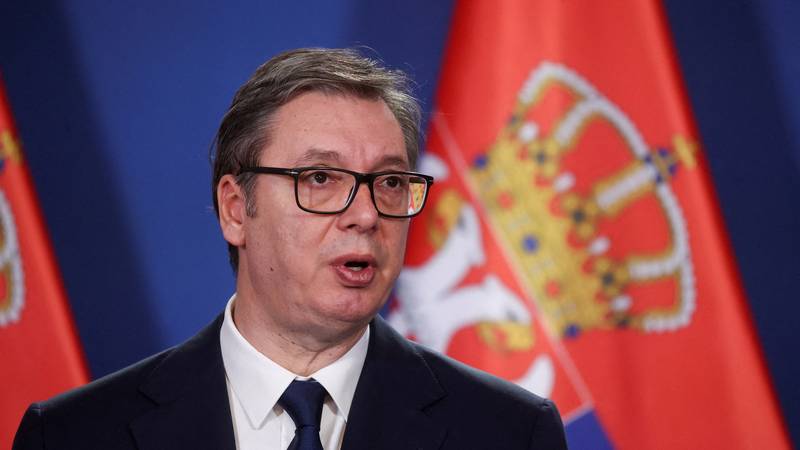India and Pakistan are in the war because of Kashmir: ‘Both sides have nuclear weapons. Not good ‘

Nuclear forces of India and Pakistan dance again on the verge of universal war, and the wick is already on. The horrific massacre six weeks ago, when armed people massacred 26 civilians, almost all tourists in Pahalgama, raised tension to the wake. India responded to rockets on Tuesday, May 6th.
Watch the video:
01:01
India attacked Pakistan
Namely, Indian authorities, led by the Prime Minister Narendro Modiwithout hesitation, they immediately pointed their finger at the Pakistani extremist groups, and promised a « fast, strong and determined answer that enemies would remember for a long time. »
On the other hand, Islamabad panicked any involvement, accusing India of unfounded charges and warning of the catastrophic consequences of any « reckless military adventure. » They announced that they would respond with a weapon to the attack.
Constant accusations
Recall that Indian defense of India Rajnath Singh immediately stated that « the traces undoubtedly lead across the border », alluding to Pakistan.
– We will not only target those who performed the attack. We will also target those who planned this act in the shadow, on our soil – Singh said.
Prime Minister Modi convened an emergency session of the National Security Council, and the military leadership was placed in the state of the highest readiness.
– We will not sit down with our hands broken as terrorists shine death on our country. The answer will be such that generations will be remembered – he thundered fashion in addressing the nation, while angry protesters on the streets of Delhi fired Pakistani flags.
Pakistan, as expected, promptly denied any connection with the attack. Their foreign minister said Pakistan « strongly condemns terrorism in all its forms » and offered cooperation in the investigation, urging India that « he does not use this tragic event to scatter regional conflicts. » But in India, few believe in the sincerity of these words.
In the epicenter of this multi -diocese hostility is found Kashmirbeautiful but tragic Himalayan region. From the division of the Indian subcontinent in 1947, Kashmir is an apple of discord – divided by a line of control, but both countries are entitled to the entire territory. The majority Muslim population in the Indian -managed part of Kashmir for decades is under repression, and the separatist movements, which India claims that Pakistan actively supports weapons and training, constantly cause instability.
– Kashmir is an open wound on the body of the subcontinent – explains the geopolitical analyst picturesquely. Dr. Arjun Sharma.
– Each, even the smallest incident, whether it is a terrorist attack in India or a border skirmish, is immediately reflected on cashmere. It is a barrel of gunpowder that threatens an explosion at any moment. India accuses Pakistan of sponsoring terrorism, while Pakistan accuses India of violating human rights in Kashmir. The truth is, as always, probably somewhere in between, but there is no place in this atmosphere for her – says Sharma.
Life in fear
Kashmir residents live in constant fear. Military patrols, police watches, interruptions of internet and telephone connections have become part of their harsh everyday life. Each escalation between India and Pakistan is first felt on their skin, through increased militarization and repression. The young Kashmirci grew up without perspective, surrounded by violence and uncertainty, making them easy prey for radicalization on both sides.
Although Kashmir is the most visible and the best problem, he is by no means the only one. The relations between two adjacent nuclear forces are burdened with a whole series of other complex issues that further complicate the already explosive situation.
India regularly accuses Pakistan of providing refuge and active support for terrorist groups that perform attacks on Indian soil. Memories of horrific attacks in Bombay 2008 or an attack on a military convoy in Pulwami 2019. They are still fresh and serve as a permanent reminder of this threat. Pakistan, on the other hand, claims that he is the victim of terrorism himself and accuses India of stimulating separatism in Pakistani province Belujistan.
Nuclear forces
What makes the whole situation more immensely more dangerous is the fact that both India and Pakistan are nuclear forces. Both countries have arsenal of atomic weapons and ballistic missiles capable of reaching key cities in rival territory. The weapons race does not wane; Every now and then, we witness the tests of new, increasingly murderous missiles, which further raises tensions.
– It’s a classic security dilemma. Each side strengthens its military capacities from fear of another, which drives the latter to further armament. It is a vicious circle that, if not interrupted, can only have one outcome – a disaster – says Dr. Sharma.
An additional source of training is the issue of dividing the water of the powerful River of Indd and its tributaries, key to agriculture and the life of millions of people in both countries. Although there is an agreement on the division of water (Indus Waters Treaty) concluded back in 1960. In addition to the mediation of the World Bank, India, as a upstream country, occasionally threatens to limit the flow of water to Pakistan, especially in moments of elevated tensions. Such threats in Islamabad are perceived as an existential danger.








